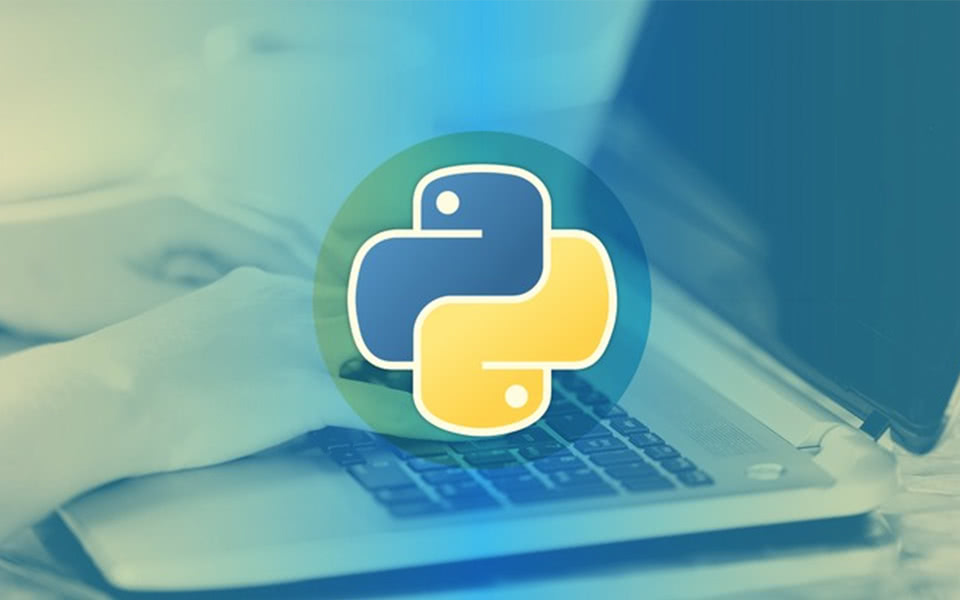1.6 元组(Tuple) | 不可改变的 Python 数据类型¶
元组简介¶
元组 (Tuple) 是 Python
中基本数据结构之一,与列表类似,但元组中的元素不允许被修改,因此元组也被称作只读列表。
元组使用小括号- () 包裹,元素之间使用逗号- ,
分隔,元组中的元素可以是字符串、数字、列表、元组等其他数据类型。
元组不支持修改,但支持索引、拼接、成员检查、重复等相关操作,下面我们通过案例来学习。
初识元组¶
1、使用小括号定义一个空元组。
>>> def_tuple = ()
>>> def_tuple
()
# type 查看数据类型
>>> type(def_tuple)
<class 'tuple'>
2、使用 tuple() 方法定义一个空元组。
>>> def_tuple = tuple()
>>> def_tuple
()
# type 查看数据类型
>>> type(def_tuple)
<class 'tuple'>
3、使用索引获取元组元素。
>>> def_tuple = ("kele", "tea")
>>> def_tuple[0]
'kele'
4、元组也可嵌套。
>>> def_tuple = ("kele", ("xuebi", "tea"))
>>> def_tuple[1]
("xuebi", "tea")
# 怎么取嵌套元组中的元素?
>>> def_tuple[1][0]
'xuebi'
5、元组特性之元素不允许被修改,但其元素的元素为可变类型时则支持修改。
>>> def_tuple = ("kele", "tea")
>>> def_dict[0] = "xuebi"
# 试图修改元组中的元素会报错
Traceback (most recent call last):
File "<input>", line 1, in <module>
TypeError: 'tuple' object does not support item assignment
# 元组第二个元素是一个列表,可直接通过索引修改
>>> def_tuple = ("kele", ["tea", "kele"])
>>> def_tuple[1][1] = "xuebi"
>>> def_tuple
('kele', ['tea', 'xuebi'])
6、元组特性之元素不能被删除,但可删除整个元组。
>>> def_tuple = ("kele", "tea")
>>> del def_tuple[0]
# 试图删除元组中的元素会报错
Traceback (most recent call last):
File "<input>", line 1, in <module>
TypeError: 'tuple' object doesn't support item deletion
# 使用 del 删除整个元组
>>> del def_tuple
7、元组特性之任何无符号的对象,以逗号分割,默认被视为元组。
>>> any_unsigned_objects = "kele", "age", 18
>>> any_unsigned_objects
('kele', 'age', 18)
>>> type(any_unsigned_objects)
<class 'tuple'>
元组基本操作符¶
操作符 |
说明 |
|---|---|
+ |
连接元组元素 |
* |
重复元组元素 |
in / not in |
成员判断 |
[index:index] |
元组切片 |
1、使用 + 连接元组元素。
>>> def_tuple1 = ("kele", "tea")
>>> def_tuple2 = ("xuebi", "coffee")
>>> def_tuple1 + def_tuple2
('kele', 'tea', 'xuebi', 'coffee')
2、使用 * 重复元组元素。
>>> def_tuple = ("kele", "tea")
>>> def_tuple * 2
('kele', 'tea', 'kele', 'tea')
3、使用 in 、not in 判断元素是否在元组中,是则返回 True ,
否则返回 False 。
>>> def_tuple = ("kele", "python")
>>> "kele" in def_tuple
True
>>> "python" not in def_tuple
False
4、使用 [:] 对元组进行切片,遵循左闭右开原则。
>>> def_tuple = ("Hi", "my", "name", "is", "kele")
# 截取第一至第三个元素(不包括第三个元素)
>>> def_tuple[0:2]
("Hi", "my")
# 超出索引值并不会报错
>>> def_tuple[0:10]
('Hi', 'my', 'name', 'is', 'kele')
# 全元组截取(复制元组)
>>> def_tuple[:]
('Hi', 'my', 'name', 'is', 'kele')
# 指定步长,截取列表
# 步长为 2 ,表示每两个元素取一个元素
>>> def_tuple[0:5:2]
('Hi', 'name', 'kele')
# 怎么反转元组?
>>> def_tuple[::-1]
('kele', 'is', 'name', 'my', 'Hi')
元组基础方法¶
元组基础方法可参照下表:
方法 |
说明 |
|---|---|
len(tuple) |
计算元组元素数量 |
max(tuple) |
返回元组中最大的元素 |
min(tuple) |
返回元组中最小的元素 |
type(tuple) |
查看数据类型 |
tuple(iterable) |
将可迭代对象转换为元组 |
1、使用 len 方法计算元组数量。
>>> def_tuple = ("kele", "python")
>>> len(def_tuple)
2
2、使用 max 方法,返回元组中最大的元素。
>>> def_tuple = (18, 8, 168)
>>> max(def_tuple)
168
3、使用 min 方法,返回元组中最小的元素。
>>> def_tuple = (18, 8, 168)
>>> min(def_tuple)
8
4、使用 type 方法查看数据类型。
>>> def_tuple = ("kele", "python")
>>> type(def_tuple)
<class 'tuple'>
5、使用 tuple 方法将可迭代对象转换为元组。
>>> def_list = ["kele", "python"]
>>> tuple(def_list)
('kele', 'python')
>>> type(tuple(def_list))
<class 'tuple'>
元组内置方法¶
Python 中的 tuple
类提供了元组操作相关的内置方法,由于元组仅有两个内置方法,这里再选择类中的部分
魔法方法 进行演示,下面按照类中方法定义的顺序演示。
1、使用 index 返回某一元素在元组中第一次出现的索引值。
# 使用语法:dict.index(obj)
>>> def_tuple = ("Hi", "kele", "python", "kele")
>>> def_dict.index("kele")
1
2、使用 count 方法统计某一元素在元组中出现的次数。
# 使用语法:dict.count(obj)
>>> def_tuple = ("Hi", "kele", "python", "kele")
>>> def_tuple.count("kele")
2
>>> def_tuple.count("xuebi")
0
3、使用 __add__ 方法在元组后面追加新的元组,与 + 类似。
# 使用语法:dict.__add__(tuple)
>>> def_tuple = ("Hi", "kele")
>>> def_tuple2 = ("python", "say")
>>> def_tuple.__add__(def_tuple2)
('Hi', 'kele', 'python', 'say')
4、使用 __contains__ 方法判断某一元素是否包含在元组中,是则返回
True , 否则返回 False ,与 in 、not in 类似。
# 使用语法:dict.__contains__(obj)
>>> def_tuple = ("Hi", "kele")
>>> def_tuple.__contains__("kele")
True
>>> def_tuple.__contains__("xuebi")
False
5、使用 __mul__ 方法重复元组元素,与 * 类似。
# 使用语法:dict.__mul__(num)
>>> def_tuple = ("Hi", "kele")
>>> def_tuple.__mul__(2)
('Hi', 'kele', 'Hi', 'kele')
>>> def_tuple.__contains__("xuebi")
False
元组扩展¶
1、使用 sorted 函数对元组进行排序。
>>> def_tuple = ("2c", "3a", "1b")
# 直接调用
# 返回排序后元素组成的列表
>>> sorted(def_tuple)
['1b', '2c', '3a']
# 使用匿名函数 lambda 按照元素的第一个字符排序
>>> sorted(def_tuple, key=lambda x:x[0])
['1b', '2c', '3a']
# 使用匿名函数 lambda 按照元素的第二个字符排序
>>> sorted(def_tuple, key=lambda x:x[1])
['3a', '1b', '2c']
# 原元组并不会改变
>>> def_tuple
('2c', '3a', '1b')
2、使用 sorted 函数对元组进行多规则的排序。
>>> def_tuple = ("2c", "3a", "1b", "3d")
# 先按第一个字符排序,若相同,再按第二个字符排序
>>> sorted(def_tuple,key=lambda x:(x[0], x[1]))
['1b', '2c', '3a', '3d']
总结¶
Python 中的元组与列表类似, 索引、切片等用法基本相同,但也存在一定差异,其不允许修改的特性,经常被用于定义、保存一些特定的数据。
定义元组可直接使用小括号-
(), 也可选择tuple()方法,在定义单元素元组时需要在末尾加上,,否则会引起误会。
# 习惯用法尝试
>>> def_tuple = ("kele")
>>> type(def_tuple)
# 居然不是元组,是字符串类型
<class 'str'>
>>> def_tuple = (1)
>>> type(def_tuple)
# 居然不是元组,是数字类型
<class 'int'>
# 正确用法
>>> def_tuple = ("kele", )
>>> type(def_tuple)
<class 'tuple'>
>>> def_tuple = (1, )
>>> type(def_tuple)
<class 'tuple'>
元组虽然不允许修改,但当其元素的子元素包含可变类型时,也是允许修改的,当然,也可通过连接、重复组成新的元组。
元组仅有两个内置方法,
tuple类中的其他魔法方法,大家可逐个进行尝试,对于效果一样的方法,使用时可自行选择。文中难免会出现一些描述不当之处(尽管我已反复检查多次),欢迎在留言区指正,也可分享元组相关的知识。
Python 系列相关文章已全部更新至个人博客:kelepython.rtfd.io,欢迎前往阅读。
为了便于沟通交流,我已创建微信学习交流群,欢迎在后台回复
加群加入我们。

